Located in the very heart of the Horn of Africa, Ethiopia shines as the beacon of African strength and the cradle of an ancient civilization. Teddy Afro, an Ethiopian singer-songwriter, expressed his admiration for the country’s unique heritage and determination to remain free, “Ethiopia is not just a country; it’s a spirit, a belief, a light that shines across the world.” Indeed, Ethiopia is one of only very few African countries that European settlers were not able to colonize. The resilience and strength of Ethiopians, the breathtaking beauty of their land, and its ancient roots are unparalleled on the entire continent. Yet, how can one explain that Ethiopia has not escaped the tragic fate of many of its neighbors who are plagued by ethnic violence, economic insecurity, and continued conflicts that have destabilized Ethiopia over the past few decades? Ethiopia’s past and present anchor the unwavering will of its people. The current security challenges require an in-depth examination to provide a strong analysis of its current security challenges.
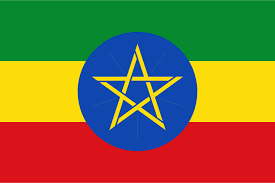
The Federal Republic of Ethiopia, located in the Horn of Africa, is the second most populous country on the African continent after Nigeria. With a population of nearly 118 million people, Ethiopia represents a melting pot of nearly 80 ethnic groups rooted in the Middle East and ancient African cultures.1

Ethiopia stands as the oldest independent country on the African continent, where the most ancient human remains, dated around five million years old, were discovered in the Awash Valley in 1974.2 The country’s rich history that avoided Ethiopians a colonial destructive phase in its history also protected its cultural and linguistic diversity facilitating Ethiopia’s transition to democracy between 1991 and 1994. Ethiopia held its first parliamentary elections the following year.3 This transition followed centuries of rule by Emperors, a military coup, and an attempt at socialism. In 1994, Meles Zenawi formed the new government and served as its leader in August of the same year. Even though Ethiopia witnessed significant political instability over the years, it remained a prominent African state with a growing economic and political role on the international stage.
Despite being landlocked, Ethiopia’s strategic proximity to Europe and the Middle East offers substantial advantages for enhancing its trade partnerships. Ethiopia remains one of the fastest-growing economies in the region, with an impressive average yearly growth rate of 10 percent for the past 15 years. The country’s new membership in the BRICS+ economic alliance and the expansion of its trade ties provide opportunities to attract more foreign direct investments, improve its infrastructure, create employment opportunities, and address diverse security concerns.4
Yet, Ethiopia has experienced economic, political, and societal challenges, including political instability, armed conflicts, economic disparity, and the impact climate change while growing its economy. Ethiopia has focused on economic expansion and enhanced its cooperation with international partners to address these issues to strengthen its position and build long-lasting, reliable trade routes.

Ethiopia’s ancient, unparalleled heritage stands out. Scientists discovered the jawbone of what they claim is one of the very first humans on Earth. According to reports, the 2.8 million-year-old specimen is 400,000 years older than researchers thought that our kind first emerged5.
Strategically, Ethiopia has leveraged its international prestige by joining one of the fastest growing alliances and by volunteering its hospices for negotiating with other African partners.
BRICS+ Economic Bloc Membership
The BRICS+, as an economic alliance, focuses on enhancing cooperation and development among the emerging economies of the Global South. The new bloc represents over 40 percent of the world’s population and accounts for 37.3 percent of global gross domestic product (GDP). BRICS’ GDP has grown to surpass by one and a half times the European Union’s GDP.6 As the BRICS+ alliance expands with new members and additional partner states join annually, trade opportunities open new larger booming international markets.
Ethiopia’s acceptance into the BRICS+ alliance was announced during the bloc’s annual summit held in Johannesburg, South Africa, in 2023. This step marked a pivotal moment in the country’s history. It opened doors to billions of potential consumers since the BRICS countries are home to roughly 3.3 billion people — or over 40 percent of the global population, as mentioned above.7 Their membership facilitates diverse collaboration opportunities in agriculture modernization, technological advancement, renewable energy, the energy sector, and strategic infrastructure construction. For example, Brazil and Ethiopia have strengthened their cooperation over the past several years. The BRICS+ Agricultural Working Group met in Brazil in March 2025, where Ethiopia and other member states focused on programs that enhance food security and provide assistance to farmers. Additionally, members discussed investments in reforestation programs, agricultural technology transfer programs, and sustainable approaches to farming.8 China launched two observation satellites for Ethiopia and assisted with the funding of infrastructure to provide the necessary maintenance.9
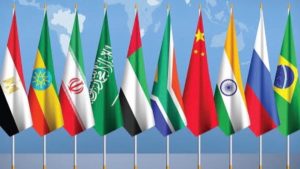
BRICS+ membership allows Ethiopia to boost its economic growth even further, attract foreign direct investments, and amplify its role in regional cooperation. Multilateral and bilateral initiatives have made substantial contributions to Ethiopia’s development. Agriculture remains the foundation of Ethiopia’s economy, and the bloc presents an opportunity to collaborate with Russia, a leading global exporter of fertilizers, agrochemicals, and machinery equipment. Since food security has remained one of Ethiopia’s major human security concerns, a partnership with Russia opens doors to modern and cost-effective solutions for agrobusinesses in Ethiopia and Africa.
As a member of the BRICS+ alliance, Ethiopia can now export domestic products such as coffee, oilseeds, vegetables, and gold to new economic partners.10 In return, the country will enjoy improved access to its key imports, such as mineral fuels, electrical machinery, fertilizers, pharmaceutical products, iron, steel, and plastics.11
Besides economic opportunities, BRICS+ membership enhances Ethiopia’s position in international affairs. The alliance provides a global platform that is used to draw the global community’s attention toward challenges that prevail in many countries of the Global South, such as economic disparity, social inequalities, historic exploitation that resulted in a lack of development, and the need to shift focus towards multipolarity, with peace and cooperation as its core principles. Abiy Ahmed Ali, the Prime Minister of the Federal Democratic Republic of Ethiopia, has been actively advocating for the restructuring of the United Nations to enhance its inclusiveness and amplify the voices of developing nations.12
Therefore, the BRICS+ alliance connects countries with like-minded state actors who seek mutual benefits through increased cooperation.
Economic growth and its importance
Ethiopia boasts one of the fastest-growing economies in the region amidst internal conflicts. Over the past two decades, the country transformed from a primarily agricultural economy to a diversified framework including services and industry. After recording an average economic growth rate of nearly 10 percent over the past 15 years, one of the fastest growth rates in the world, Ethiopia is on track to sustain similar economic advances this year. By emphasizing investments in infrastructure, Ethiopia transformed its growth sectors’ key attribute.13
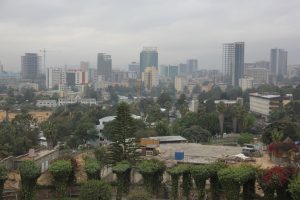
In 2023, the economy of Ethiopia expanded by 7.1 percent, an increase from 6.4 percent above the previous year. The services sector drove the growth, contributing 40 percent to the nation’s gross domestic product (GDP). Industry and agriculture also played vital roles, accounting for 28 percent and 32 percent of GDP, respectively.14
The country’s main sources of growth and investment come from its construction, services industry, agriculture, and manufacturing sectors. Services, agriculture, and industry accounted for 40 percent, 32 percent, and 29 percent of GDP, respectively.10 Ethiopia’s biggest trade partners are China (24 percent), the United States (9 percent), India (8 percent), UAE (6 percent), and the UK (4 percent).1
Ethiopia’s economic growth potential directly corresponds to its ability to address main security challenges, such as economic disparity, food insecurity, supply chain inadequacies, violence, and armed conflicts, as well as threats posed by climate change. Therefore, by focusing on economic development, Ethiopia will improve its long-term stability and security. The country’s membership in the BRICS+ bloc, China’s Belt and Road Initiative, and participation in multilateral diplomacy provide crucial ways to enhance its outlook. Next, let’s look at its strongest alliance.
Ethiopia and China Relations
China’s groundbreaking Belt & Road Initiative (BRI), designed to facilitate cross-border cooperation in trade and foreign direct investments, is one of the most significant economic and foreign policy instruments in modern history, with trade flows among member nations expected to increase by 4.1 percent. China’s primary goals of the BRI initiative include prioritizing the development of infrastructure and regional connectivity to bolster trade logistics among participating nations. After years of strategic outreach, China’s investments in these efforts yielded considerable positive results, such as the construction of new roads, railways, and pipelines and the expansion of Chinese companies globally.17
China assumed an active role in the economic development of the Horn of Africa via its BRI initiatives. Ethiopia has made substantial strategic steps towards expanding its partnership eastward, with China becoming its top trade and investment partner. Ethiopia and China established official diplomatic relations in 1970. Over the past five decades, the relationship between the two countries transformed into multifaceted cooperation, including trade, foreign direct investment (FDI), and financing programs.18 Comprehensive initiatives help improve Ethiopia’s long-term growth potential and economic development. Notably, the bilateral partnership grew further when it developed from a “Comprehensive Strategic Cooperation Partnership” to an “all-weather Development Cooperation” in October 2023.18
China has made substantial investments in the infrastructure of Ethiopia with such important projects as the Addis Ababa-Djibouti railway and the Tekeze Dam, enhancing the country’s logistics as part of China’s Belt and Road Initiative. Investments in Ethiopia’s energy sectors, highways, and telecommunications became important partnership milestones.18 According to the Ministry of Finance of Ethiopia, the two countries have undertaken more than 70 “mega projects”, for which China allocated nearly $15 billion in credit facilities. These projects include infrastructure development initiatives estimated at $12.2 billion.18
China’s foreign direct investment in Ethiopia has reached $4 billion as the cooperation between the two states continues growing.22
In addition to cooperation opportunities, as part of China’s Belt and Road Initiatives (BRI), the Forum of China-Africa Cooperation Summit in Beijing (FOCAC) became an important platform. In 2024, FOCAC was one of the biggest diplomatic events held in September 2024. Leaders from 50 African states, except the Kingdom of Eswatini, a state who maintains close diplomatic ties with Taiwan, attended the event. Abiy Ahmed Ali, the Prime Minister of the Federal Democratic Republic of Ethiopia, represented Ethiopia. The primary focus on peace, mutual prosperity, and cooperation resonated with the African leaders, who closely identify with the opposition to all forms of neocolonialism and international economic exploitation.23
During the event, China announced new zero-tariff incentives on all exports to China from Ethiopia and other partner African nations.23 Such preferential treatment strengthens China-Ethiopia ties, enhances supply chains, and enhances enterprise and investment initiatives. China pledged approximately $49.8 billion in financial assistance to African partners over the next three years. It emphasized the role of Belt and Road projects for modernizing African infrastructure and logistics routes and enhancing their trade potential.23
The event underscores the emerging shift towards multipolarity and Ethiopia’s readiness to strengthen its trade, investments, and diplomacy with China. Beyond economic cooperation, China and its African partner states agreed to reforming the global financial system and working toward mutually beneficial financing alternatives for countries of the Global South. All of these positive developments cannot fully eclipse the continued human security challengers that continue brewing in Ethiopia.
Security Issues: Armed Conflicts
The Middle East and North Africa (MENA) security has been significantly destabilized by the military conflicts in Ethiopia, Sudan, and Somalia. The continued violence has been rooted in political divisions and domestic ethnic-based tensions that fuel a chaotic migrant crisis and further disruptions in the area. Due to the region’s strategic location, greater influence has shifted from Western countries to a group of international actors such as China, Russia, and the Gulf States.26 Security challenges in the MENA region and in Ethiopia, more specifically, result from a range of related and interconnected crises. Even though Ethiopia is relatively more stable than its neighboring states in the Horn of Africa, wider regional peace and security dilemmas continue posing profound threats. Violent conflicts in the Amhara and Oromo regions weaken Ethiopia’s security continuously. Its broken relations with Eritrea have yet to recover and add serious military threats at its border.27 At the heart of Ethiopia’s military violence lies Prime Minister Abiy Ahmed’s initiative to consolidate power by redefining the power balance among diverse ethnic groups that was established by the country’s political structure, founded on ethnic federalism, established by Meles Zenawi’s regime.26 In 2018, unrest and violence resulted from political fragmentation and ethnic-based tensions caused by Prime Minister Abiy Ahmed’s reforms.29
Despite its promising economic potential, Ethiopia faces national and human security challenges related to violence, trafficking in humans and arms, as well as ethnic-based conflicts. Recent armed conflicts, primarily in the Amhara region, deepen domestic instability and humanitarian concerns in the country. The United States has a history of supporting Ethiopia in its initiatives to uphold liberal democratic principles, although security interests have always taken priority. It was former President Barack Obama who, during his visit to Ethiopia in July 2015, declared that the United States’ foreign policy sees the African nation as a partner despite its democratic shortfalls.30 Despite the voiced support of the United States, political instability became one of the main drivers of ethnic violence in Ethiopia.
The African Union took an active role in facilitating the Pretoria Agreement of 2022 which marked an official step towards ending the central role of the Tigray People’s Liberation Front (TPLF) in Ethiopia’s national politics and signing a Cessation of Hostilities Agreement (CoHA) with the Federal Democratic Republic of Ethiopia (FDRE). The CoHA is a basis for weakening ethno-nationalism in Ethiopia as a political force that continuously destabilized the country and incited violence. The consolidation of power by Ethiopia’s Prime Minister Abiy Ahmed is perceived as considerable progress towards stabilizing the state.31
Continued violence remains the top security concern. Lasting political tensions and a lack of effective de-escalation strategies are at the core of the issue. In 2019, Ethiopia’s nearly 30-year ethnic-based ruling coalition, the Ethiopian People’s Revolutionary Democratic Front (EPRDF), merged into a single unity party called the Prosperity Party. Despite such a historic move, the Tigray People’s Liberation Front (TPLF), which represented the leading coalition political fraction at the time, declined to join. As a result of escalating tensions, a military conflict between the Ethiopian military and the TPLF in 2020. After two years of violence, reported human rights violations, and atrocities allegedly committed by the opposing sides, an agreement was reached to end the hostilities. Even though there has not been a resurgence of the conflict, erupting tensions among other influential groups within Ethiopia’s political circles, primarily the Oromo Liberation Army (OLA) and Amhara militia Fano, continue to pose substantial threats.1
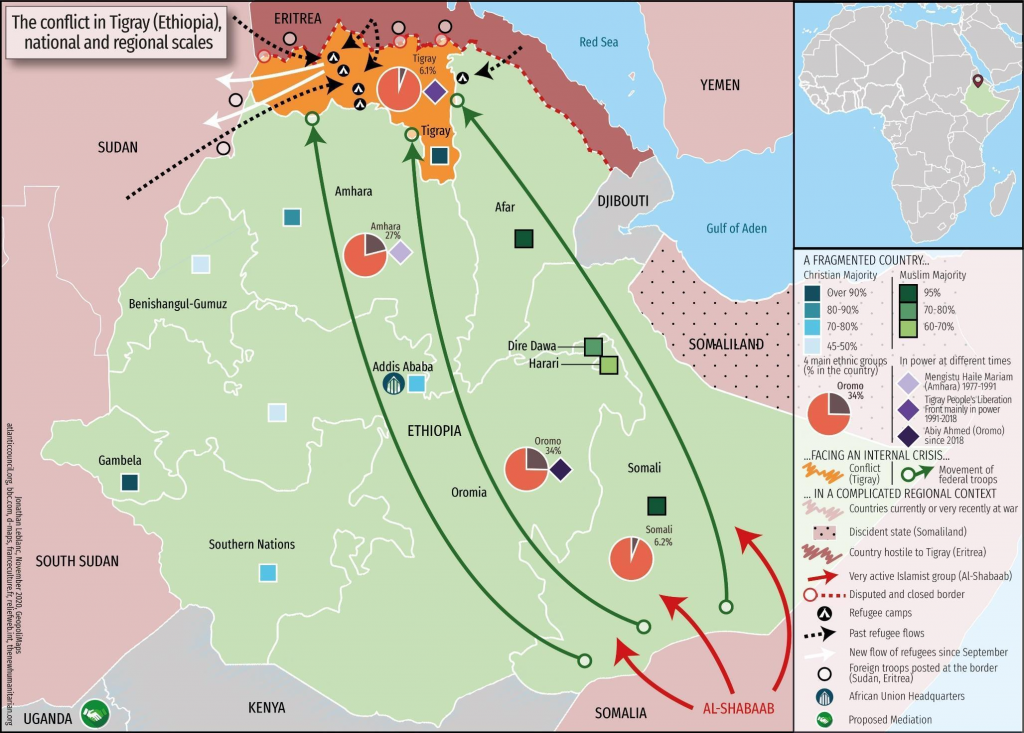
Amhara decentralized ethno-nationalist militia Fano initiated an attack on Ethiopia’s government forces in northern Ethiopia’s Amhara region in July 2024. The region of Amhara holds the largest share of Ethiopia’s population. Renewed tensions between the Amhara militias and the state came as a result of Prime Minister Abiy Ahmed’s consolidation of power and worsening ethnic tensions in response to his domestic policies. After the November 2022 deal to end the brutal Tigray war, tensions between Prime Minister Ahmed and Amhara elites intensified. Eritrea supported the latter and remains an adversary since it fought against Ethiopia a border war in 1998-2000. As the militias challenged the federal forces’ ability to control the Amhara region, their popularity among the Amhara population highlighted the need for national reconciliation initiatives that failed to transpire at the most critical moment. Regional paramilitaries joined the Amhara militias in an act of insurgency and internal escalation as Ethiopia transitioned from the Tigray conflict to yet another violent uprising.33
In the second half of the year, Fano militia launched an offensive on two key Ethiopian cities, Metemma and Gondar, with heavy civilian casualties and displaced individuals fleeing the violence. The offensive destabilized Ethiopia by degrading the government forces and gaining control of the disputed territories in the Tigray region. Further, the offensive led by Fano threatens Ethiopia’s neighboring regions with ethnic violence and has the potential to impact neighboring states in the Horn of Africa, such as Eritrea, Somalia, and Sudan.34 A humanitarian crisis in the Amhara region with high levels of violence and massive human rights violations unfolded. Reports highlighted the tragic circumstances as attacks on United Nations aid workers forced a pause in humanitarian assistance relief to civilians.35
Security issues in the Horn of Africa have spread not only to neighboring countries but also internationally due to their complex geopolitical and military connections. The access to available trade routes and the geostrategic interests of the involved international actors attract such global players as the United States, China, and Russia, who have a stake in the region’s power struggle and security landscape. Due to the strategic role of the Red Sea and the US’s active involvement and military presence in the Middle East, Ethiopia found itself at the crossroads of the political chess game. As the power of the United Arab Emirates in the MENA’s security architecture continues to grow, its activities prioritize not only maritime control but also land and resource acquisitions in Ethiopia that further fuel tensions and competition among various interest groups.36
Security issues in neighboring states, such as Ethiopia, Eritrea, Djibouti and Somalia, that together comprise the Horn of Africa highlight the need for an amplified political engagement with all involved parties, to tackle a range of humanitarian challenges and build opportunities to strengthen security cooperation among African countries and other powerful international players.36 Solutions to armed conflicts and violence are multifaceted, including continued improvements in Ethiopia’s economic stability that would enable the state to increase employment and educational opportunities, decrease disparity, and form a reliable security framework that could efficiently address grievances prior to escalating into conflicts. In the case of the Fano offensive, Ethiopian government forces could not defeat the rebel militia militarily. To achieve meaningful progress in peace and security-building initiatives, the African Union (AU) ought to take on a more assertive role. The AU should provide assistance to conflict resolution efforts in Sudan, identifying ways to facilitate stability in the central Sahel, supporting democratic principles in Cameroon, launching another African Union force in Somalia, and focusing on preventing conflict escalation on the regional level.38 Therefore, Ethiopia needs substantial investments in equipment, education, and training for its armed forces. A decrease in violence would help address displacement and loss of human capital. Further, educational efforts that encompass community outreach should help shift focus towards peace initiatives, tolerance, and acceptance as a path toward an open dialogue.
Conclusion
Located in the Horn of Africa, Ethiopia boasts a fast-growing economy with the potential to increase the nation’s ability to address its populations grievances to minimize various security concerns related to internal ethnic conflicts, impact of climate change, and lower social unrest.
Both regional and internal armed conflicts remain Ethiopia’s top security concern. The state of Ethiopia will have to invest substantial amounts of resources to train its military into disciplined and well equipped forces that can defeat any future insurgency. This highlights the necessity for education, professional military training, and latest technological equipment. In recent decades, Ethiopia transformed its economy from primarily agriculture-based to expanding both its service and manufacturing industries. The country’s new membership in the BRICS+ bloc, its central connection with China’s Belt and Road Initiative, and its participation in international summits such as FOCAC can attract new investors and trade partners vital for Ethiopia’s sovereignty and independence. Climate change poses another significant risk to human security. The country must further modernize its agriculture and invest in its domestic infrastructure to improve access to water, security food supply, and reduce the negative impacts of droughts and floods on Ethiopian people. Ethiopia can sustain its unparalleled economic growth and amplify its development opportunities through international cooperation and effective domestic policies.
- Central Intelligence Agency (n.d.). Explore All Countries – Ethiopia. Retrieved March 13, 2025, from https://www.cia.gov/the-world-factbook/countries/ethiopia/. ↵
- UNESCO, Lower Valley of the Awash. UNESCO World Heritage Collection. Retrieved March 13, 2025, from https://whc.unesco.org/en/list/10/#:~:text=In%201974%2C%20the%20valley%20produced,Genus%20Australopithecus%20and%20Homo%2Dsapiens. ↵
- About Ethiopia. Embassy of Ethiopia in the US. Retrieved March 13, 2025, from https://ethiopianembassy.org/overview-about-ethiopia/. ↵
- BRICS+, “BRICS Member States, https://infobrics.org/ retrieved 3/24/2025. ↵
- BBC News. First Human Discovered in Ethiopia (March 4, 2015). Retrieved March 28, 2025 from https://www.bbc.com/news/science-environment-31718336 ↵
- BRICS: Here’s what to know about the international bloc (2024, November 20). Ethiopia – China Economic Cooperation. Retrieved March 3, 2025, from https://www.weforum.org/stories/2024/11/brics-summit-geopolitics-bloc-international/#:~:text=Today%2C%20BRICS%20countries%20are%20home,%25%20and%20women%20at%2047.4%25. ↵
- World Economic Forum (2024, November 20). BRICS: Here’s what to know about the international bloc. Retrieved March 13, 2025, from https://www.weforum.org/stories/2024/11/brics-summit-geopolitics-bloc-international/#:~:text=Today%2C%20BRICS%20countries%20are%20home,based%20on%20purchasing%20power%20parity. ↵
- Federal Department of Ethiopia. Ethiopia’s BRICS engagement under Brazil’s presidency: maximizing economic benefits and widening partnerships. (December 5, 2024). Retrieved March 28, 2025, from https://www.ifa.gov.et/2024/12/05/ethiopias-brics-engagement-under-brazils-presidency-maximizing-economic-benefits-and-widening-partnerships/. ↵
- Reuters. China builds space alliances in Africa as Trump cuts foreign aid (Feb. 11, 2020). Retrieved March 28, 2025, from https://www.reuters.com/investigations/china-builds-space-alliances-africa-trump-cuts-foreign-aid-2025-02-11/. ↵
- International Trade Administration (2024, January 18). Ethiopia – Country Commercial Guide. Retrieved March 3, 2025, from https://www.trade.gov/country-commercial-guides/ethiopia-market-overview. ↵
- Annual International Trade Statistics by Country. Ethiopia. Trend Economy. Retrieved March 3, 2025, from https://trendeconomy.com/data/h2/Ethiopia/TOTAL. ↵
- African Union. Statement by Dr. Abiy Ahmed, Prime Minister of the Federal Republic of Ethiopia -38 AU Summit (February 15, 2025). Retrieved March 28, 2025, from https://au.int/en/speeches/20250215/statement-dr-abiy-ahmed-prime-minister-federal-republic-ethiopia-38-au-summit-15. ↵
- World Bank Group (2024, October 8), The World Bank in Ethiopia, Retrieved March 3, 2025, from https://www.worldbank.org/en/country/ethiopia/overview. ↵
- African Development Bank (n.d.). Ethiopia Economic Outlook. Retrieved March 3, 2025, from https://www.afdb.org/en/countries/east-africa/ethiopia/ethiopia-economic-outlook. ↵
- International Trade Administration (2024, January 18). Ethiopia – Country Commercial Guide. Retrieved March 3, 2025, from https://www.trade.gov/country-commercial-guides/ethiopia-market-overview. ↵
- Central Intelligence Agency (n.d.). Explore All Countries – Ethiopia. Retrieved March 13, 2025, from https://www.cia.gov/the-world-factbook/countries/ethiopia/. ↵
- Nadin, R., Mami, E., Calabrese, L., Cao, Y., & Chen, Y. (2023). Key takeaways. In Ten Years of the Belt and Road Initiative: What has the BRI delivered for connectivity in developing countries? (pp. 56). ODI. http://www.jstor.org/stable/resrep63765.10. ↵
- Ministry of Finance Ethiopia (n.d.). Ethiopia – China Economic Cooperation. Retrieved March 3, 2025, from https://www.mofed.gov.et/blog/ethiopia-china-economic-cooperation/. ↵
- Ministry of Finance Ethiopia (n.d.). Ethiopia – China Economic Cooperation. Retrieved March 3, 2025, from https://www.mofed.gov.et/blog/ethiopia-china-economic-cooperation/. ↵
- Ministry of Finance Ethiopia (n.d.). Ethiopia – China Economic Cooperation. Retrieved March 3, 2025, from https://www.mofed.gov.et/blog/ethiopia-china-economic-cooperation/. ↵
- Ministry of Finance Ethiopia (n.d.). Ethiopia – China Economic Cooperation. Retrieved March 3, 2025, from https://www.mofed.gov.et/blog/ethiopia-china-economic-cooperation/. ↵
- Ministry of Finance Ethiopia (n.d.). Ethiopia – China Economic Cooperation. Retrieved March 3, 2025, from https://www.mofed.gov.et/blog/ethiopia-china-economic-cooperation/. ↵
- Ministry of Foreign Affairs of China (2024, August 31). The 2024 Summit of the Forum on China-Africa Cooperation. Forum on China-Africa Cooperation. Retrieved March 3, 2025, from https://2024focacsummit.mfa.gov.cn/eng/. ↵
- Ministry of Foreign Affairs of China (2024, August 31). The 2024 Summit of the Forum on China-Africa Cooperation. Forum on China-Africa Cooperation. Retrieved March 3, 2025, from https://2024focacsummit.mfa.gov.cn/eng/. ↵
- Ministry of Foreign Affairs of China (2024, August 31). The 2024 Summit of the Forum on China-Africa Cooperation. Forum on China-Africa Cooperation. Retrieved March 3, 2025, from https://2024focacsummit.mfa.gov.cn/eng/. ↵
- Pospisil, J. (2024). The New Geopolitical Formation in the Wider Horn of Africa: Consequences for Europe. OIIP – Austrian Institute for International Affairs. http://www.jstor.org/stable/resrep61086. ↵
- International Crisis Group. (2025). Eight Priorities for the African Union in 2025. International Crisis Group. p.5. http://www.jstor.org/stable/resrep67355. ↵
- Pospisil, J. (2024). The New Geopolitical Formation in the Wider Horn of Africa: Consequences for Europe. OIIP – Austrian Institute for International Affairs. http://www.jstor.org/stable/resrep61086. ↵
- Gleixner-Hayat, B. (2024). Ethiopia. In U.S. Support for Democratic Openings in Conflict-Affected Countries: Lessons From Ethiopia and Sudan (pp. 9–18). Carnegie Endowment for International Peace. http://www.jstor.org/stable/resrep63786.6. ↵
- Gleixner-Hayat, B. (2024). Ethiopia. In U.S. Support for Democratic Openings in Conflict-Affected Countries: Lessons From Ethiopia and Sudan (pp. 9–18). Carnegie Endowment for International Peace. http://www.jstor.org/stable/resrep63786.6. ↵
- Gebresenbet, F., & Tariku, Y. (2023). The Pretoria Agreement: mere cessation of hostilities or heralding a new era in Ethiopia? Review of African Political Economy, 50(175), 96–106. https://www.jstor.org/stable/48814414. ↵
- Central Intelligence Agency (n.d.). Explore All Countries – Ethiopia. Retrieved March 13, 2025, from https://www.cia.gov/the-world-factbook/countries/ethiopia/. ↵
- International Crisis Group. (2023). Ethiopia’s Ominous New War in Amhara. International Crisis Group. http://www.jstor.org/stable/resrep54877. ↵
- Institute for the Study of War (2024, September 26). FANO Offensive in Ethiopia’s Amhara, Egypt Arms Somalia; Rebel Drones in Mali, Burkina Thwarts Another Coup. Retrieved March 3, 2025, from https://www.understandingwar.org/backgrounder/africa-file-september-26-2024-fano-offensive-ethiopia%E2%80%99s-amhara-egypt-arms-somalia-rebel. ↵
- Levinson, R., & Paravicini, G. (2024, October 8). UN weighs suspending relief to Ethiopia’s Amhara after aid workers attacked, document shows. Reuters. Retrieved March 3, 2025, from https://www.reuters.com/world/africa/un-weighs-suspending-relief-ethiopias-amhara-after-aid-workers-attacked-document-2024-10-08/. ↵
- Pospisil, J. (2024). The New Geopolitical Formation in the Wider Horn of Africa: Consequences for Europe. OIIP – Austrian Institute for International Affairs. http://www.jstor.org/stable/resrep61086. ↵
- Pospisil, J. (2024). The New Geopolitical Formation in the Wider Horn of Africa: Consequences for Europe. OIIP – Austrian Institute for International Affairs. http://www.jstor.org/stable/resrep61086. ↵
- International Crisis Group. (2025). Eight Priorities for the African Union in 2025. International Crisis Group. p.4. http://www.jstor.org/stable/resrep67355. ↵
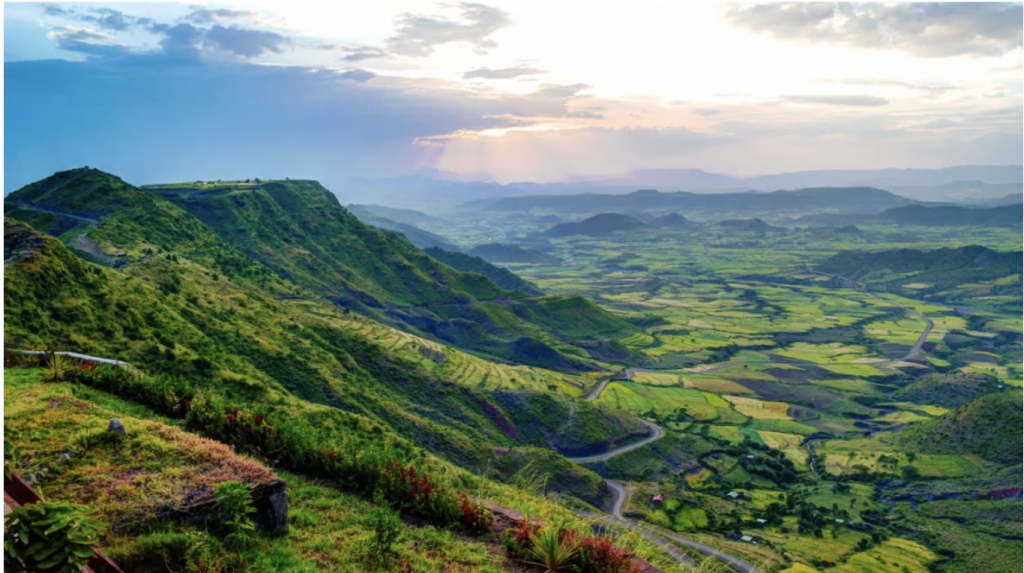


25 comments
Rebecca Amaya
It was unexpected to learn that Ethiopia’s internal security challenges are more of a threat to itself than external threats. The ethnic divisions and civil unrest have caused greater turmoil than cross-border tensions because it damages national cohesion. What resonated most with me is that Ethiopia has a dual identity that runs between a strong symbol of African independence yet struggles with internal disintegration. What role should the African Union play in addressing Ethiopia’s internal conflicts given that it’s headquarters are in Addis Ababa?
Teagan McSherry
One unexpected aspect is how Ethiopia’s internal ethnic divisions and historical conflicts continue to influence its security landscape, as Ethiopia grapples with ongoing tensions among various ethnic groups, which cause issues in development and security. The exploration of Ethiopia’s ancient civilizations, such as the Kingdom of Aksum, resonated deeply with me, providing a deeper understanding of the country’s cultural identity. What made you decide to explore the relationship between Ethiopia and China?
Carollann Serafin
1) I did not entirely know about Ethopia’s involvement in conflicts throughout the Horn of Africa to even a short extent so I appreciate being able to gain knowledge on that topic.
2) The best part of this story was learning about the economy as someone who taught about a country that was assumed to be poor it was indeed not and it was nice to hear about the population growing rapidly too.
3) I think one question I would ask if what made you gain interest in this topic.
Sarah Etter-Hinojosa
Wow Elena, excellent article! Your work here was thorough and compelling. I specifically appreciated reading about Ethiopia’s role in BRICS+. In my article, I wrote about the relationship between Ethiopia and Egypt over the Nile. Part of the Nile begins in Ethiopia, giving them control over the water usage. It seems that their role in BRICS+ has strengthened their confidence in this position, perhaps making them more competitive against Egypt. Do you think this kind of competition could increase regional tensions?
TJ
This article effectively balances Ethiopia’s promising economic growth and its persistent security challenges. The author highlights the country’s rich history, its strategic BRICS+ membership, and its strong relationship with China as key economic drivers. However, the piece also delves into the ongoing ethnic-based conflicts, particularly in the Amhara and Oromo regions, and the unresolved tensions with Eritrea, which continue to destabilize the nation. The author points out that lasting peace requires addressing the root causes of these conflicts and building a unified national security framework.
Micaella Sanchez
I was impressed by how Ethiopia balances its rich ancient heritage with its modern economic ambitions. Despite internal conflicts and security issues, I admire the country’s resilience and strategic diplomacy, as demonstrated through the BRICS+ and China’s Belt and Road Initiative. This analysis helped me understand the interconnectedness of peace, economic development, and political stability, and why Ethiopia’s future depends on it to secure long-term prosperity.
LaShanna Hill
What was unexpected to me in learning about their security challenges was how the Middle East and North Africa Security is being destabilized. The best part of the story that resonated with me was the explanation of how these multiple violent conflicts are a major foundation for the ethnic based tensions behind their migrant crisis. Their dispositions on unwanted migrants may fuel the increased actions of human and arm trafficking.
What suggestions are there that MENA could do, to “kill two birds with one stone.” with Ethiopia to address the human right crises and ethnic-based tensions resulting from previous reforms?
Jesse Turnquist
Hi Elena, What a great article. I found it to be a very good read. I knew a lot about the eternal conflicts Ethiopia has been faced with and is still facing today. I was surprised to see them moving to BRICS+, which is a strategic move not only for them but for the world as new shifts begin to change and challenge the U.S. What are your thoughts on the internal conflicts? How can they be stopped to progress toward a more stable future?
Mia Ramirez
The most surprising thing that I learned about this country was the resistance from powerful groups such as TPLF, OLA, and fano, even after the peace efforts such as the 2022 Pretoria Agreement. What caught my attention is how climate change is a significant risk to human security. This issue resonated with me because the country suffers from droughts and floods and because of that it affects their agriculture. My question is how can the Ethiopian people improve their food and water security?
Karicia Gallegos
Something that was unexpected to me in learning about the security challenges this country faces is how Ethiopia, despite never being colonized, still struggles with internal conflicts. I found it surprising that such a historically strong nation still faces many of the same issues as its neighbors that did experience colonization. The best part of this story that most resonated with me is Ethiopia’s recent entry into the BRICS+ alliance because it shows the country’s determination to grow economically. A question I would ask is: What steps do you think Ethiopia should take to fix its problems while also trying to grow its role in the world?